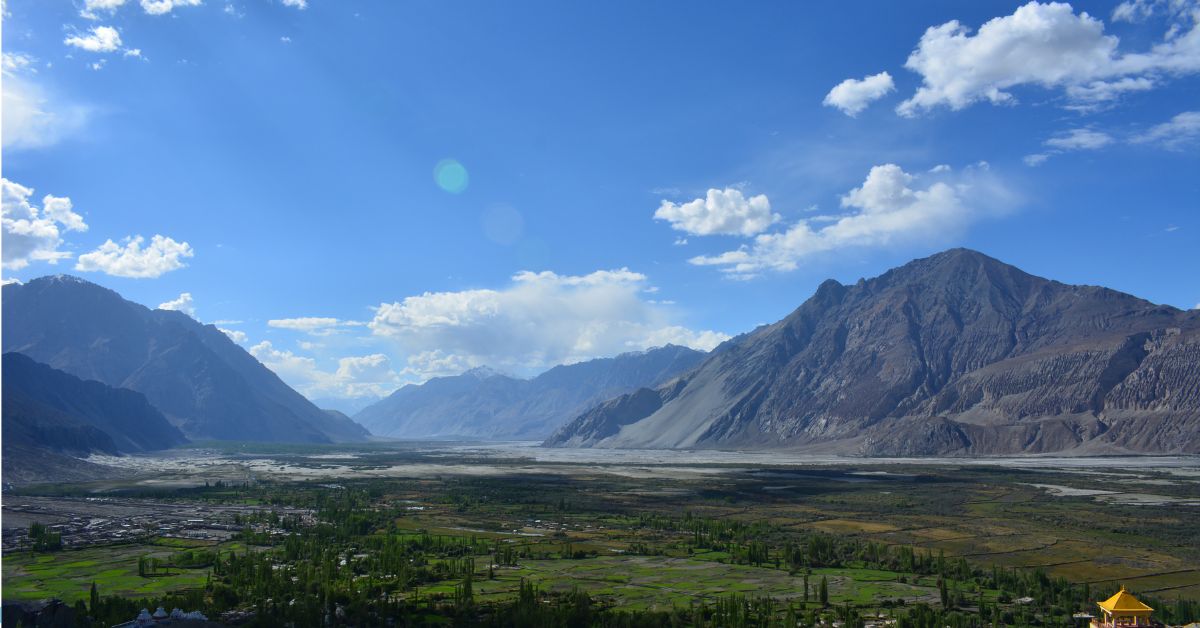Nubra Valley is a hidden gem in Ladakh. It’s like a desert oasis surrounded by giant mountains. With its sandy hills, green fields, and clear rivers, it’s a place unlike anywhere else.
To get there, you have to cross Khardung La, one of the world’s highest roads. It’s an adventure just to get there! Nubra Valley has old monasteries, friendly villages, and colorful markets. It’s a perfect place to learn about Ladakhi life.
How to reach:
By Air:
- Fly to Leh: The closest airport is Leh, well-connected to major Indian cities.
- Acclimatize: Spend a few days in Leh to adjust to the high altitude.
By Road:
The journey to Nubra Valley involves crossing the iconic Khardung La Pass.
- Private Vehicle or Taxi: Offers flexibility and comfort.
- Motorcycle or Bike: For adventure enthusiasts, it’s a thrilling experience.
- Shared Jeep or Taxi: A budget-friendly option for solo travelers.
- Organized Tours: Ideal for those who prefer a guided experience.
Best time to visit:
Summer (May to September)
- Pleasant weather: Enjoy warm days and cool nights, perfect for exploring.
- Peak season: Expect crowds but excellent accessibility to all areas.
- Vibrant landscape: Witness the valley in full bloom with lush greenery.
Autumn (October to November)
- Pleasant weather: Mild temperatures with clear skies, ideal for photography.
- Fewer crowds: Experience a quieter atmosphere and stunning fall foliage.
- Road closures: Be aware that some higher passes might close.
Winter (December to February)
- Cold weather: Brace yourself for extreme cold and snowfall.
- Limited access: Many roads, including Khardung La, are closed.
- Unique experience: Ideal for adventure seekers and those who love winter landscapes.
Spring (March to April)
- Warming temperatures: Enjoy milder weather as the valley starts to thaw.
- Melting snow: Be prepared for potential road closures and muddy conditions.
- Quiet season: Experience the valley’s awakening with fewer crowds.
Attractions:
Hunder Sand Dunes:
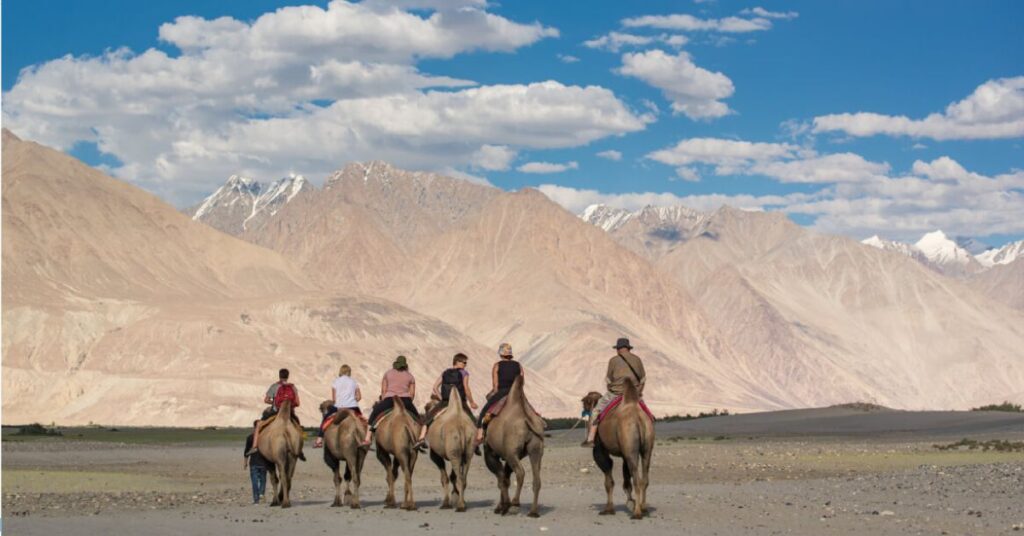
The Hunder Sand Dunes are like something out of a dream. Imagine golden sand stretching as far as you can see, right next to snowy mountains! It’s a crazy sight. These big sand hills are home to special two-humped camels. You can even ride them! Watching the sunset over the dunes is like being in a painting. It’s a place you have to see to believe.
Turtuk Village:
Turtuk is a special place hidden away in Nubra Valley. It’s like stepping back in time. The people there are really friendly and have their own unique way of life. You can see it in their houses and the way they live. The valley is green and beautiful, and they grow delicious fruit like apricots. It’s a place to relax and learn about a different culture.
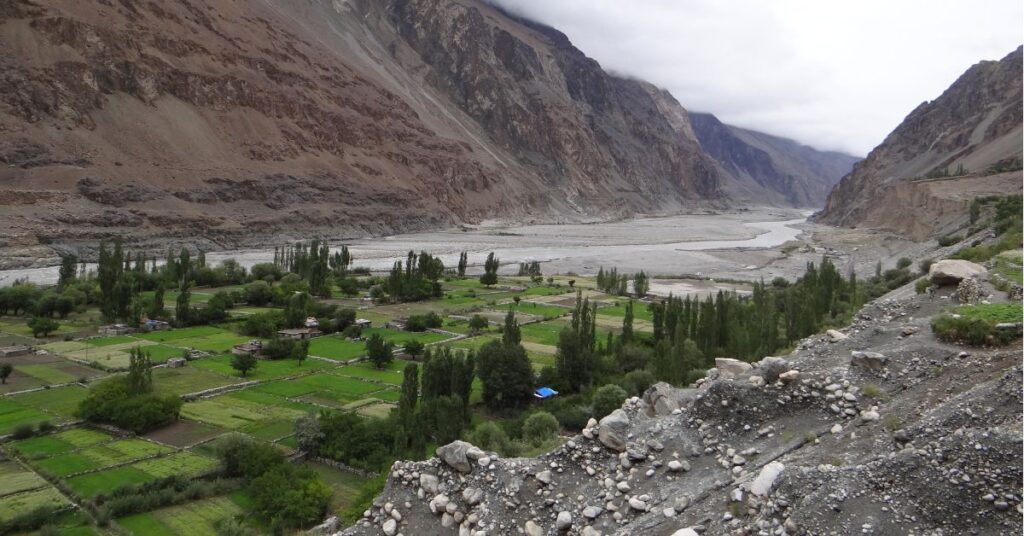
Panamik Hot Springs:
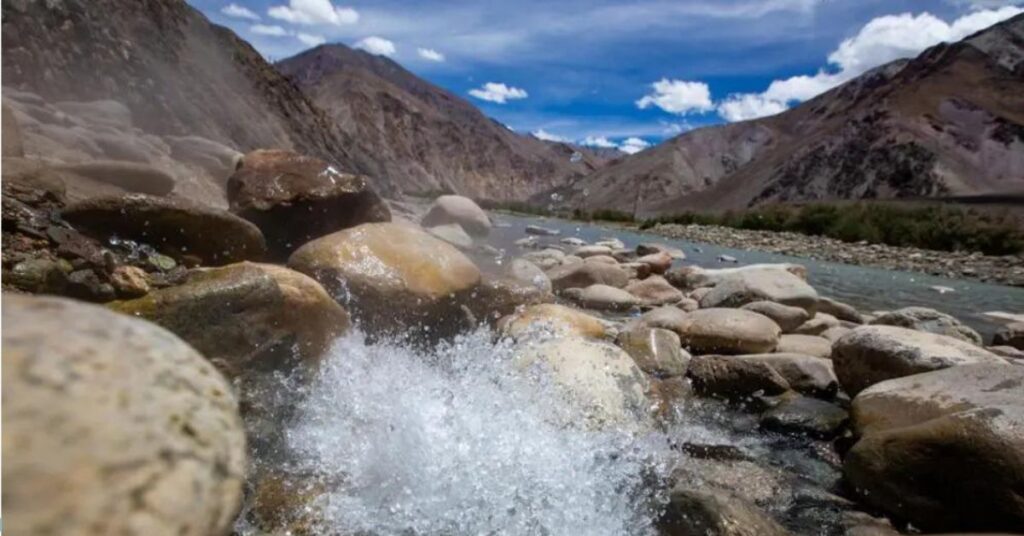
Panamik Hot Springs is a special place in Nubra Valley. Imagine soaking in warm, healing waters while looking at beautiful mountains. The water is said to be good for you, and it’s really relaxing. It’s the perfect way to rest after a long day of exploring.
Siachen Base Camp:
Siachen Base Camp is not in Nubra Valley. It’s a military base located much further east in the Karakoram Range. While it’s a popular misconception, it’s important to clarify this for accurate travel information.
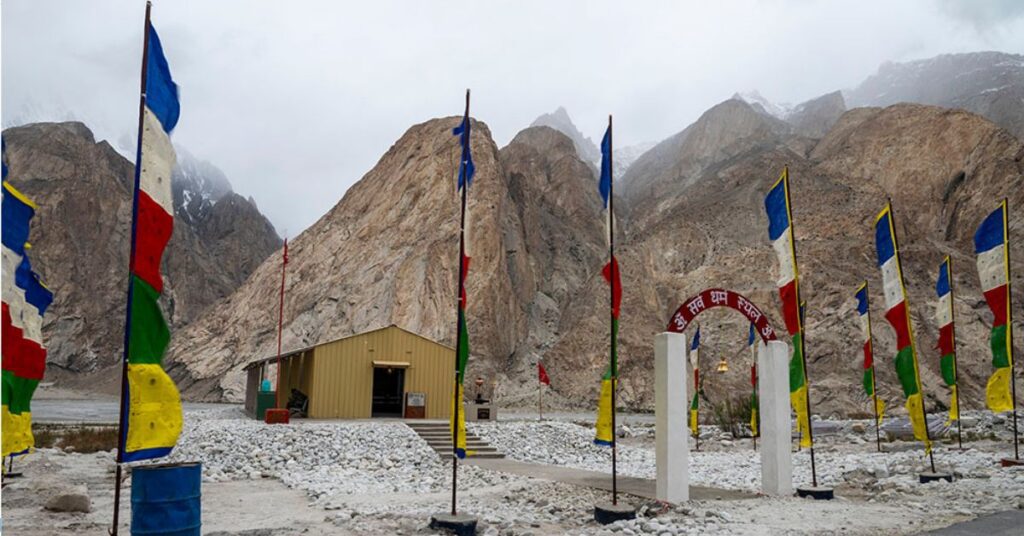
Local Experiences:
- Ride a camel: Experience the thrill of a camel ride on the iconic Hunder sand dunes.
- Explore Turtuk: Discover the unique Balti culture and history in this remote village.
- Hike to Yarab Tso Lake: Enjoy the serenity of this high-altitude lake surrounded by stunning scenery.
- Visit monasteries: Explore the rich Buddhist heritage at Diskit and Sumur monasteries.
- Immerse in local life: Wander through villages like Hunder, interact with locals, and learn about their traditions.
- Indulge in local cuisine: Savor the flavors of Ladakh with dishes like momos, thukpa, and butter tea.
- Attend festivals: Experience the vibrant Ladakhi culture through traditional festivals and performances.
- Soak in hot springs: Unwind at the Panamik Hot Springs and enjoy the therapeutic benefits.
- Photography: Capture the breathtaking landscapes of Nubra Valley.
- Support local communities: Participate in community projects or support local NGOs.
Travel tips:
- Acclimatize in Leh: Spend a few days in Leh to adjust to the high altitude before heading to Nubra Valley.
- Check road conditions: Ensure the Khardung La Pass is open and accessible before your trip.
- Obtain necessary permits: Acquire the Inner Line Permit (ILP) and any other required permits.
- Pack appropriately: Bring warm clothing, essential supplies, and travel insurance.
- Plan accommodations: Book your stay in advance, especially during peak season.
- Respect local culture: Dress modestly and be mindful of local customs.
- Carry cash: ATMs may be limited, so carry enough cash.
- Stay connected: Inform others about your travel plans and consider getting a local SIM card.
- Protect the environment: Follow leave-no-trace principles and respect the delicate ecosystem.
Conclusion
Nubra Valley is a captivating blend of nature and culture, offering a unique experience in Ladakh. Its dramatic landscapes, from towering peaks to golden sand dunes, create a mesmerizing backdrop for adventure and exploration. Immerse yourself in the rich tapestry of Ladakhi life through visits to ancient monasteries and charming villages. Whether you seek adrenaline-pumping activities or tranquil moments in nature, Nubra Valley promises to leave an unforgettable mark on your journey. Follow Xplro For more.
FAQs
1. What makes Nubra Valley a special destination?
- Nubra Valley stands out for its diverse landscapes, which include dramatic sand dunes, high-altitude lakes, and striking mountainous scenery. It also boasts a rich cultural heritage with ancient monasteries and the distinctive Bactrian camels that traverse its sand dunes.
2. How can I travel from Leh to Nubra Valley?
- To reach Nubra Valley from Leh, you will need to travel by road via the Khardung La Pass, one of the highest motorable passes globally. The drive typically takes around 5-6 hours by car or taxi. Alternatively, you might find limited flight options from Leh to Nubra Valley, though these are weather-dependent.
3. When is the ideal time to visit Nubra Valley?
- The optimal time to visit Nubra Valley is between May and September, when the weather is generally favorable and the roads are clear. Visiting in autumn (October to November) offers fewer crowds and beautiful fall foliage. Winter (December to February) presents a challenging experience with extreme cold but can be ideal for adventure seekers.
4. Do travelers need a permit for Nubra Valley?
- Yes, an Inner Line Permit (ILP) is required for visiting Nubra Valley. Indian citizens can obtain this permit from the District Magistrate’s office in Leh or through authorized tour agencies. Foreign travelers may need additional permits, so it’s important to check current regulations before traveling.
5. What items should I pack for a trip to Nubra Valley?
- Prepare for your trip by packing layered clothing to adapt to changing temperatures, including thermal wear, warm jackets, and sturdy footwear. Don’t forget sun protection such as hats, sunglasses, and sunscreen. It’s also wise to carry essentials like water, snacks, a first-aid kit, and altitude sickness medication.
6. Are there medical facilities available in Nubra Valley?
- Basic medical facilities are available in Nubra Valley, particularly in towns like Diskit and Hunder. For more serious medical issues or emergencies, it is advisable to return to Leh, where more comprehensive medical services are available.
7. What types of accommodation are available in Nubra Valley?
- Nubra Valley offers a range of accommodation options, from luxurious hotels and resorts to budget-friendly guesthouses and homestays. Major areas like Diskit and Hunder have various choices, but it’s a good idea to book your stay in advance, especially during peak travel periods.
8. How can I prevent altitude sickness in Nubra Valley?
- To avoid altitude sickness, spend a few days in Leh to acclimate before heading to Nubra Valley. Drink plenty of water, avoid heavy exertion, and consider consulting a healthcare provider for altitude sickness medication if needed. Watch for symptoms like headaches, dizziness, and nausea.
9. What local customs should I be aware of?
- Respect local traditions by dressing modestly, especially when visiting religious sites. Always seek permission before taking photos of individuals, particularly in remote areas. Being aware of and adhering to local customs helps ensure a respectful and enjoyable visit.
10. Are ATMs readily available in Nubra Valley?
- ATMs are scarce in Nubra Valley, so it’s important to carry enough cash for your needs. You’ll find more ATM options in Leh, so it’s advisable to withdraw cash before traveling to Nubra Valley.
11. Is Nubra Valley a safe travel destination?
- Nubra Valley is generally considered safe for tourists. However, it’s important to follow local regulations, stay updated on road conditions, and be prepared for high-altitude travel. Choose reputable tour operators, particularly if participating in trekking or visiting remote locations.
12. What local foods should I try in Nubra Valley?
- Sample traditional Ladakhi cuisine such as momos (dumplings), thukpa (noodle soup), and butter tea. Also, try local specialties like yak meat dishes and fresh apricots from Turtuk. These dishes offer a unique taste of the region’s culinary traditions.




